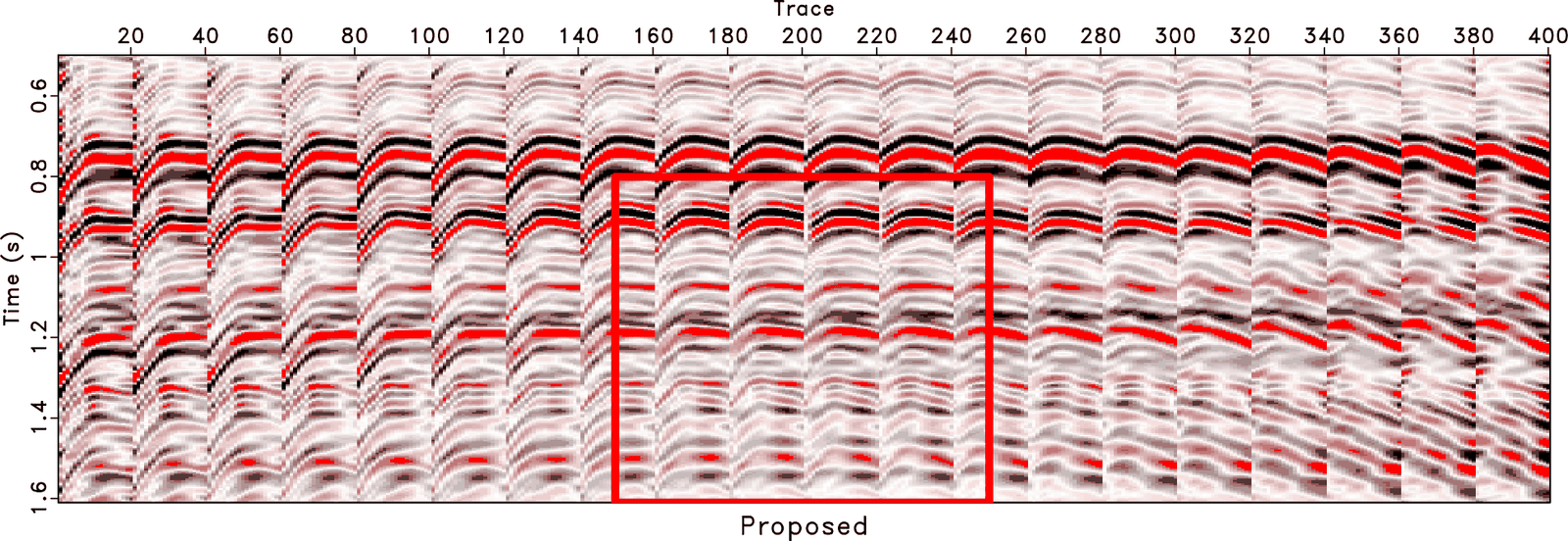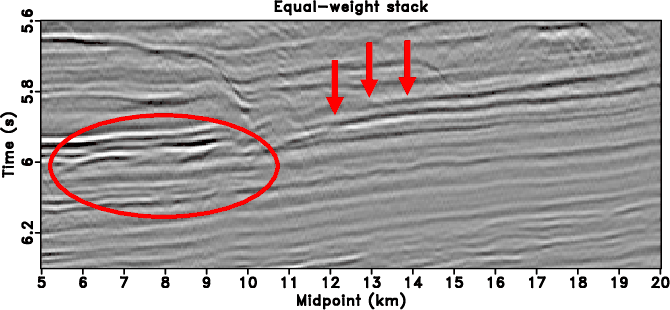A new paper is added to the collection of reproducible documents: Five-dimensional seismic data reconstruction using the optimally damped rank-reduction method


It is difficult to separate additive random noise from spatially coherent signal using a rank-reduction method that is based on the truncated singular value decomposition (TSVD) operation. This problem is due to the mixture of the signal and the noise subspaces after the TSVD operation. This drawback can be partially conquered using a damped rank reduction method, where the singular values corresponding to effective signals are adjusted via a carefully designed damping operator. The damping operator works most powerfully in the case of a small rank and a small damping factor. However, for complicated seismic data, e.g., multi-channel reflection seismic data containing highly curved events, the rank should be large enough to preserve the details in the data, which makes the damped rank reduction method less effective. In this paper, we develop an optimal damping strategy for adjusting the singular values when a large rank parameter is selected so that the estimated signal can best approximate the exact signal. We first weight the singular values using optimally calculated weights. The weights are theoretically derived by solving an optimization problem that minimizes the Frobenius-norm difference between the approximated signal components and the exact signal components. The damping operator is then derived based on the initial weighting operator to further reduce the residual noise after the optimal weighting. The resulted optimally damped rank reduction method is nearly an adaptive method, i.e., insensitive to the rank parameter. We demonstrate the performance of the proposed method on a group of synthetic and real five-dimensional seismic data.

















